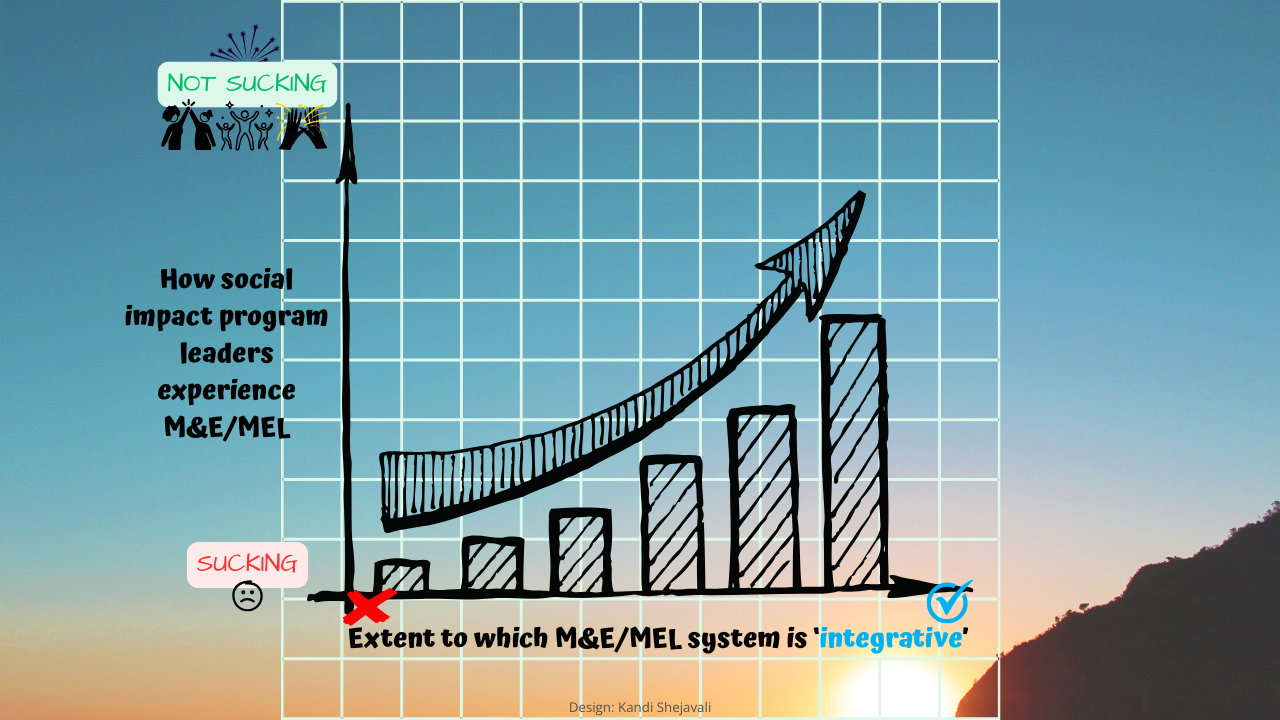Is your project's M&E system delivering?
May 01, 2023
The ‘what’ and ‘why’ of an M&E system
Most, if not all, programs or projects aimed at (co-)creating positive social and/or environmental impact will have a monitoring and evaluation (M&E) framework or system in place.
Quick aside, in case needed: What is M&E again? “M&E can be viewed as a management tool that provides information on whether the program is on track and that…helps determine the relevance, coherence, effectiveness, efficiency, impact, and/or sustainability of a project” (Shejavali, 2021).
This means that the role of the M&E system is to help measure, track, analyze, assess, and report on the program’s performance and related learning.
But how do you know whether the M&E system is delivering as it should?
Questions that help reveal whether your program’s M&E system is delivering
If the M&E system for your program or project has its own specific objectives — which it will for sure have if you’ve followed the guidance provided in ‘3 no-hassle steps towards a practical and effective M&E framework’ (to access the guide once you get to the web page, just click on the words ‘special gift’ in the first paragraph) —, then it’s pretty straightforward to tell whether the M&E system is delivering.
The core question to ask is:
- To what extent are the objectives of the M&E system being delivered?
This essentially comes down to whether fit-for-purpose evidence is being delivered to those who need it, when they need it, in the most suitable format.
For example:
- Is the program team receiving and reflecting on findings and recommendations based on the monitoring of progress and learning in time for the effective application of those findings and recommendations in follow-on programming?
- Are the populations affected by the project receiving project updates in time to meaningfully participate in the relevant activities and decision-making fora?
- Are donors receiving project updates in time to make decisions about where it would be most impactful to direct resources?
And in all cases, a key question is:
- Is the evidence being shared in a format adapted to the specific audiences in their given role and considering their capacities and time and other constraints?
If the answer to all these questions is mostly “yes”, there’s a good chance that the program’s M&E system is delivering as it should.
Don’t forget the M&E process itself!
But even if the M&E system seems to be delivering on its high-level objectives, it’s important to ask questions about the M&E implementation process itself.
Why?
Because if the process of M&E data collection, storage, cleaning, analysis, reporting, and use is impractical or otherwise cumbersome, sooner or later the effects thereof will show up in the form of poor data quality.
And that means that even systems that seem to deliver the evidence that’s needed, to those who need it, when they need it, won’t be doing so for very long. The cracks under the surface will throw things off-balance at some point.
All this can be avoided by setting the M&E system up to be as practical as it is robust.
A key question that helps assess the practicality of the M&E process is:
- What is the experience of the various project team members, members of the affected population, donors, and others when they interact with the project’s M&E system?
To find out, your mantra should be: ask; observe; and verify. In addition, much can be done at the front-end to ensure a practical M&E system. Further details on what should be considered and included in these steps are available to ‘Reimagine M&E: The Workshop’ members.
Conclusion – and then it’s over to you!
Having a system that delivers fit-for-purpose evidence to those who need it, when they need it, in the most suitable format is M&E gold.
The answers to key questions like those shared in this article will help inform the determination of whether your project’s M&E system is delivering on its potential.
But to really bring this to life in your project’s M&E system, action is needed – so take it!
To support your action-taking, practical tips and related support tailored to this topic and more are exclusively available to ‘Reimagine M&E: The Workshop’ members. If you too would like to benefit from this resource, consider becoming a member! Learn more and apply here.
Update of 23 April 2024: Please share your thoughts and experience by commenting or leaving an emoticon reaction at the bottom of this LinkedIn post or by hitting ‘reply’ to any of RM3’s emails (and if you’re not receiving our emails, join the list by signing up here or by requesting access to a free resource).
References:
Shejavali, K. (2021, April 27). MEL, MERL, MEAL, even SI…do we really need all these additional acronyms for M&E? LinkedIn Pulse. https://www.linkedin.com/pulse/mel-merl-meal-even-sido-we-really-need-all-additional-kandi-shejavali
Photo credit:
Yu Hosoi on Unsplash
Suggestion for how to cite this article (using APA 7 style):
Shejavali, K. (2023, May 1). Is your project's M&E system delivering? Blog article. RM3 Consulting. Available at: https://www.rm3resources.com/blog/is-your-project-ME-delivering (accessed: [insert the date that you last accessed this article at the link provided]).





